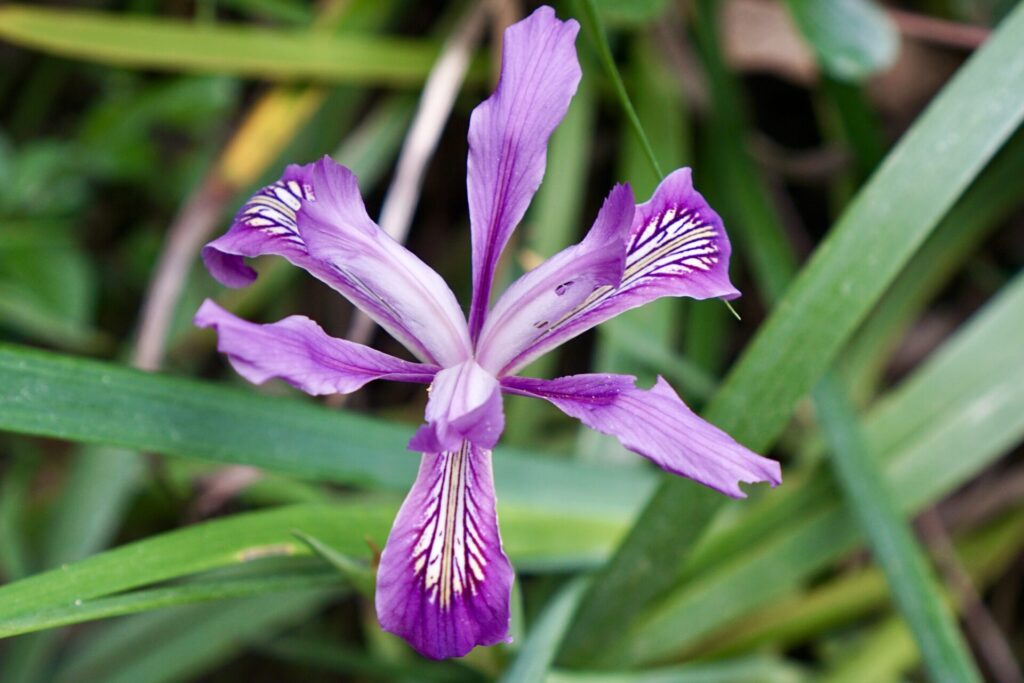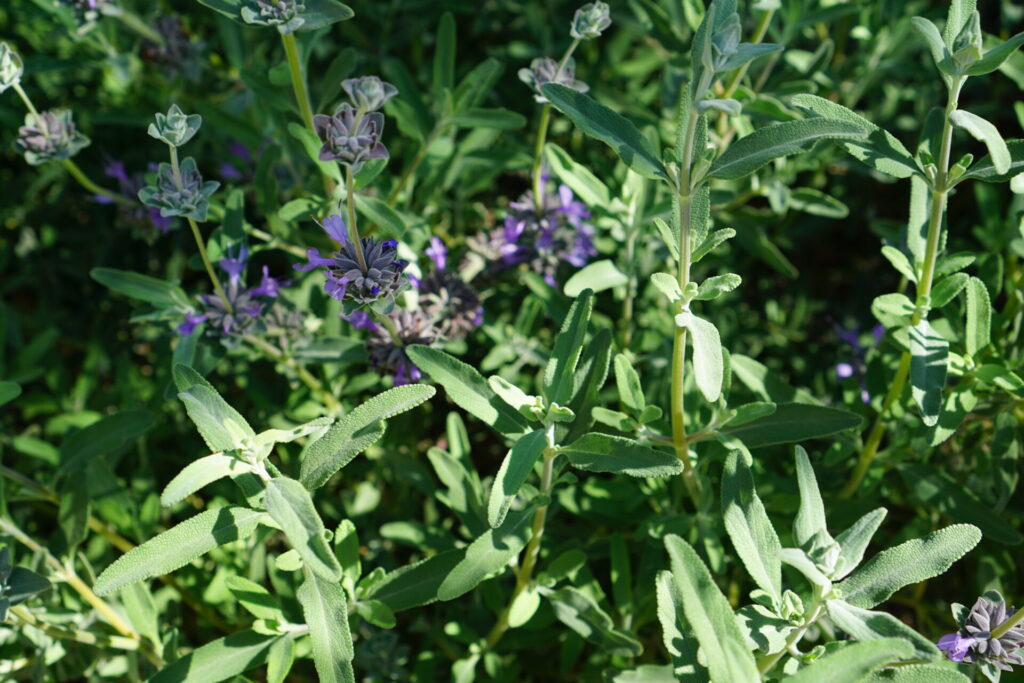This Earth Month, we took small and meaningful steps in our own backyard.
We connected with our local native plant nonprofit and explored inspiring landscapes on the LA Native Plant Garden Tour. We visited nearby nature centers and nurseries to learn which plants thrive in our region. We got our hands in the soil, planting natives in our own backyards. We proudly registered our gardens with the Homegrown National Park movement. Each of these actions brought us closer to the land, to our community, and to a more resilient, greener future we believe in.
Now, we’re inviting you to join us.
This blog shares our native plant adventures and offers beginner-friendly native plant recommendations to help you take action in your own backyard. Whether you’re curious, inspired, or ready to start digging, this is your invitation to learn, grow, and step into your role as a steward of the place you call home.
Native Plant Insights

A native plant is one that grows naturally in a specific region or habitat without human introduction. These plants evolved over thousands of years alongside local wildlife, soil, and climate and form the foundation of healthy ecosystems.
Why Native Plants Matter
Native species support the food web from the ground up—providing nectar for bees and butterflies, berries for birds, and leaves for caterpillars that feed countless other animals. Unlike non-native or ornamental plants, native plants support biodiversity and ecological balance that allows life to thrive.
History
For generations, North American Indigenous communities used sustainable practices such as controlled burns, selective harvesting, and seasonal planting. These traditional land management techniques supported rich biodiversity and ensured a steady supply of food, medicine, and materials without depleting the land.
The ecosystem balance began to shift with the arrival of European settlers in the 1600s on the East Coast and the 1700s on the West Coast. New farming practices, grazing animals, and imported plants disrupted native habits. Today, a native plant in North America is typically defined as one that existed in the region prior to European colonization.
11 Native Plants to Add to Your California Garden
As we explored local gardens and learned more about natives, we gathered plant recommendations and pro tips to help you get started in your own space:
Destination Insights
Our own backyard is California, a biodiversity hotspot. The state is home to over 6,500 native plant species – more than any other state in the U.S. Many are endemic, meaning they grow only in California and nowhere else on Earth. The diverse landscapes, from coastal cliffs to deserts and mountains, and its Mediterranean climate with cool, wet winters and hot, dry summers have shaped plants to be drought-tolerant and climate-resilient.
Iconic California Native Plants
Some iconic California natives include: The bright orange California Poppy, the state flower, creates brilliant displays in springtime. The Giant Sequoias and Coast Redwoods are among the tallest and oldest trees on Earth. In the Eastern Sierra, the ancient Bristlecone Pines can live for more than 5,000 years. The Joshua Tree, found in the Mojave Desert, stands like a natural sculpture in arid landscapes. The Mexican Fan Palm and California Fan Palm, which are the only two native palm tree species, grow naturally in desert oases, far from the coast.
Travel Guide
Day 1
| Time | Activity |
|---|---|
| Morning | • Native Plant Garden Tour (6 hours): Visited 11 gardens throughout the LA area. Insider Tip: We spent 10–15 minutes at each stop, but plan to visit fewer gardens if you want to linger, take notes, or chat with garden hosts. |
| Afternoon | • Lunch from Grounds Bakery and Cafe: Picnic-style at a public garden. The veggie cheese bagel sandwich and fresh backyard-squeezed OJ was where it’s at! |
Day 2
| Time | Activity |
|---|---|
| Morning | • Native Plant Garden Tour (5 hours): Visited 8 gardens throughout the Pasadena area. |
| Afternoon | • Lunch at HomeState: The quesadilla, Arnold Palmer, and a dark chocolate cookie hit the spot. • Artemisia Nursery: Native-focused plant shop in Los Angeles, CA. Insider Tip: Pre-order plants online to secure those popular plants. |
| Evening | • Backyard planting: California poppy, canyon duet coral bells, apricot mallow, jelly bean monkeyflower, coyote mint, pitcher sage, island alum root, mountain pride blue witch, and woodland strawberry to name a few! |
Day 3
| Time | Activity |
|---|---|
| Morning | • El Dorado Nature Center (2 hours): Guided walk to explore what was blooming on in this Long Beach garden. Insider Tip: This event gave us access to wander off trail and visit the native plant nursery. |
| Afternoon | • Lunch at The Italian Homemade Company: Savored two pasta dishes: vegetarian ravioli in a buttery sage sauce and manicotti in a creamy cacio e pepe. The outdoor dining overlooking the Long Beach harbor was beautiful! |
| Evening | • Environmental Nature Center: Native Plant Sale in Newport Beach, CA • Backyard planting: California aster, California fuchsia,Santa Rosa Island sage, blue-eyed grass, pacific coast iris, and wishbone bush to add a bit of magic! |
Next Time Must Do’s
A few plants on our wishlist—like Blonde Ambition grass and Clarkia—weren’t in stock during our trip, so we’re looking forward to visiting more local native nurseries. The Theodore Payne Foundation is high on our list for its inspiring gardens, educational resources, and expansive native plant nursery.
Wilderness Wisdom

Whether you’re just beginning or ready to expand your garden, we learned there are impactful ways to put your love for native plants into action:
- Plant native: Even one plant makes a difference. Use Calscape.org to find species for your area.
- Map your garden: Register your native garden with Homegrown National Park and become part of a growing movement.
- Join your local community: The California Native Plant Society offers tours, plant sales, and hands-on workshops for all experience levels.
- Be a steward: Lead by example. Share your native plant journey. Post photos, chat with neighbors, and inspire others to plant natives.
Trailside Ties
During our garden visits and drives between nurseries, we listened to the Golden State Naturalist podcast and felt even more connected to California’s landscapes. Host Michelle Fullner weaves science, storytelling, and wonder to share why native plants—like goldenrod and ceanothus—are essential to biodiversity and belonging. Whether you’re walking a trail, relaxing under an oak tree, or watering your garden, this podcast is the perfect companion for deepening your relationship with California’s ecosystem.
Photo Journal
























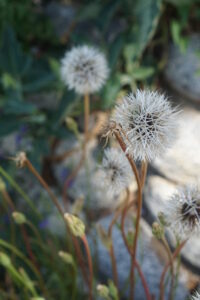
























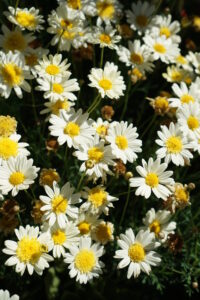

















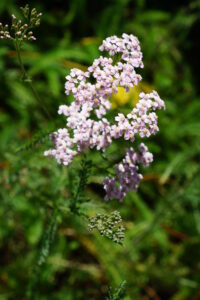






























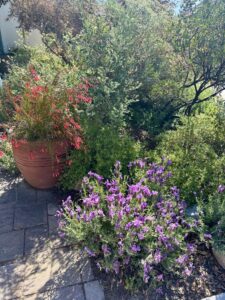















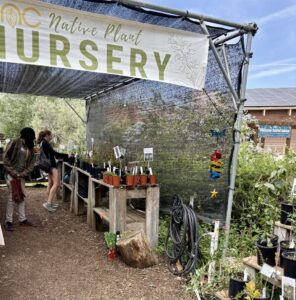


Summary
This Earth Month reminded us that meaningful change often starts with small steps, such as, a spark of curiosity, a walk through a native garden, a single plant in the ground. We learned from our community, supported local nurseries, and created habitat in our own backyard. Planting native become a welcome place for pollinators and a step toward a more resilient, greener future.
Now is the time to continue the momentum. Visit local gardens. Learn about native ecosystems. Share your journey. Plant native. Inspire others. Be the change. Let this Earth Day be the moment you take small and meaningful steps in our own backyard.




